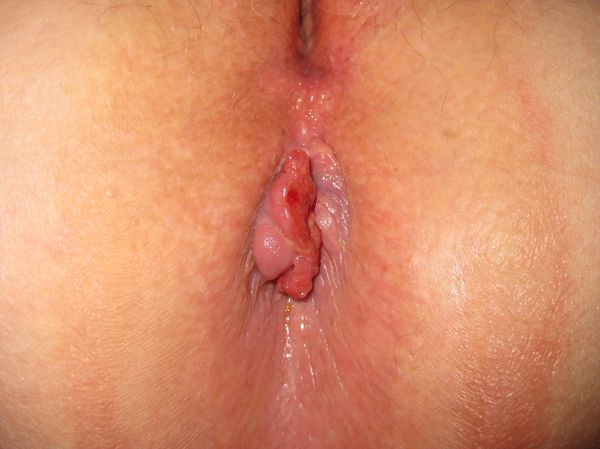Patient will present as → a 69-year-old male who complains of rectal pruritus, bleeding with defecation, and a sensation of incomplete evacuation. A palpable mass is noted on digital rectal examination.
This is a rare form of cancer. There are about 7,000 cases per year of anorectal cancer and approximately 900 deaths.
- Hematochezia is the most common symptom, tenesmus (frequent urge to go to the bathroom without being able to go), rectal mass, and a feeling of incomplete evacuation of stool (due to mass)
- Primarily adenocarcinomas
- Risk factors include infection with human papillomavirus (HPV), chronic fistulas, irradiated anal skin, leukoplakia, lymphogranuloma venereum, and condyloma acuminatum
- People having receptive anal intercourse are at increased risk
Whenever rectal bleeding occurs, even in patients with obvious hemorrhoids or known diverticular disease, coexisting cancer must be ruled out
- Typically, a colonoscopy is done, but a skin biopsy by a dermatologist or surgeon might be needed for lesions near the squamocolumnar junction (Z line). Staging by CT, MRI, or PET is advisable
Treated with wide local surgical excision, radiation with chemotherapy for large tumors with metastases
Question 1 |
The most common type of rectal cancer is
Adenocarcinoma | |
Sarcoma Hint: 0.3% of rectal cancer | |
Carcinoid tumor Hint: 0.4% of rectal cancer | |
Lymphoma Hint: 1.3% of rectal cancer |
Question 1 Explanation:
Adenocarcinoma comprise the vast majority of rectal cancers (98%).
Question 2 |
The most common site for blood-borne metastasis of rectal cancer is
Lungs Hint: 22% | |
Adrenals Hint: 11% | |
Brain Hint: The remaining 33% are divided among the many other locations where secondary carcinomatous deposits tend to lodge, including the brain. | |
Liver |
Question 2 Explanation:
The most common site for blood-borne metastasis of rectal cancer is the liver (34%).
Question 3 |
Which of the following statements about rectal cancers is incorrect?
Bleeding is the earliest and most common symptom. | |
Fecal occult blood test is a screening method | |
The overall 5-year survival rate for Stage III rectal cancer is 60-85%. | |
Pain is a late symptom. |
Question 3 Explanation:
Unfortunately, the overall 5-year survival rate for Stage III rectal cancer is 27-60%. All other statements are correct.
Question 4 |
Which of the following treatment modalities provides a cure for rectal cancer?
Surgery | |
Radiotherapy Hint: Does not provide cure on its own. It can be given preoperatively, postoperatively, and palliatively | |
Chemotherapy Hint: Does not provide cure on its own. | |
None of the above Hint: See A for explanation |
Question 4 Explanation:
Surgery is the mainstay of curative therapy.
Question 5 |
Whenever rectal bleeding occurs, even in patients with obvious hemorrhoids or known diverticular disease, coexisting cancer must be ruled out. What is the diagnostic study of choice?
Anoscopy Hint: Is good for initial visualization of hemorrhoids but is not appropriate to rule out cancer | |
MRI with contrast Hint: Staging by CT, MRI, or PET is advisable. | |
Ultrasonography Hint: See D for explanation | |
Colonoscopy |
Question 5 Explanation:
Typically, colonoscopy is done, but skin biopsy by a dermatologist or surgeon might be needed for lesions near the squamocolumnar junction (Z line). Staging by CT, MRI, or PET is advisable.
There are 5 questions to complete.
|
List |
References: Merck Manual · UpToDate


